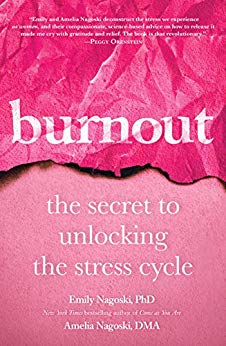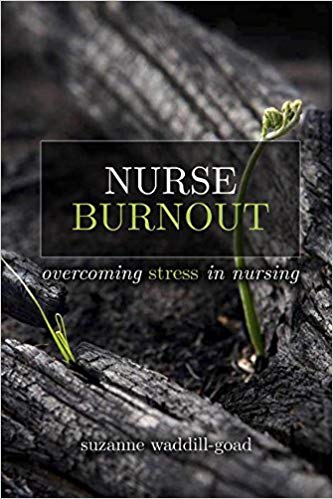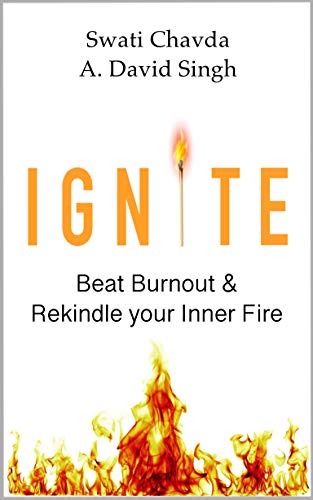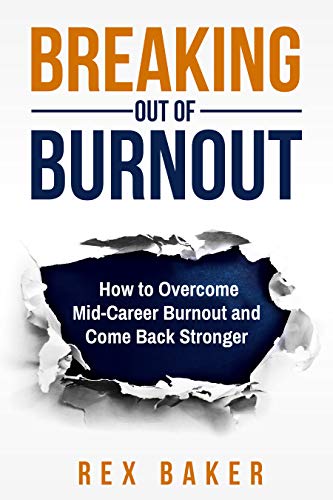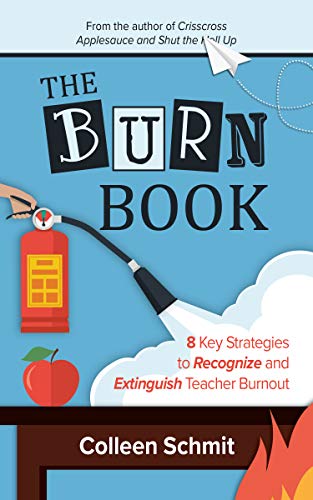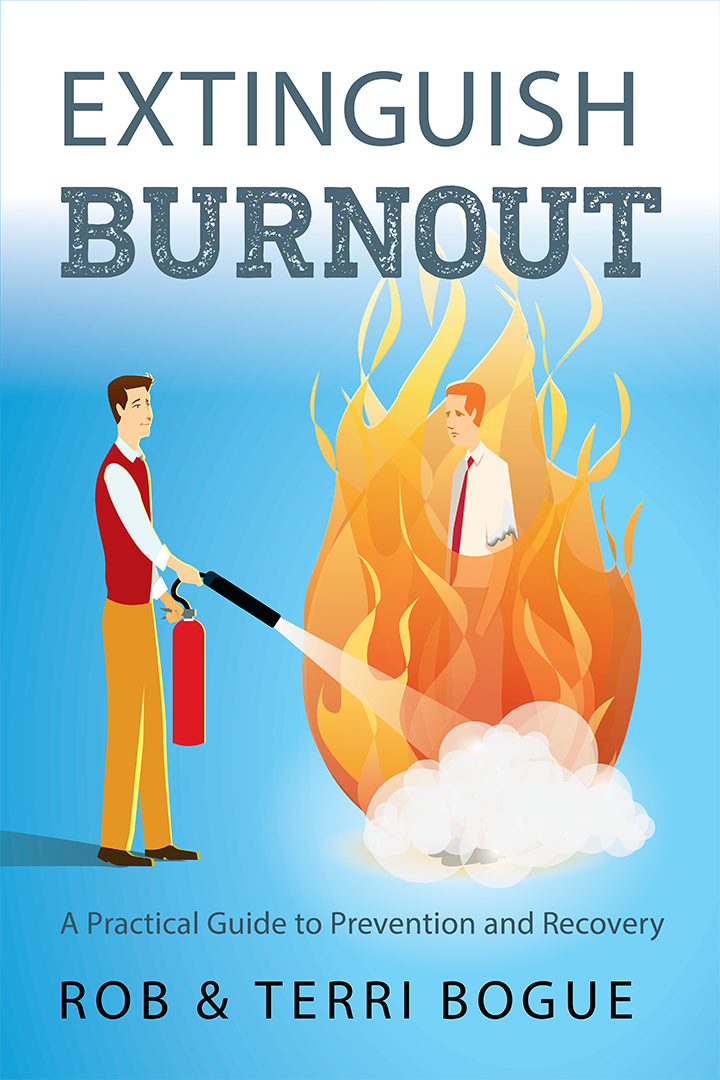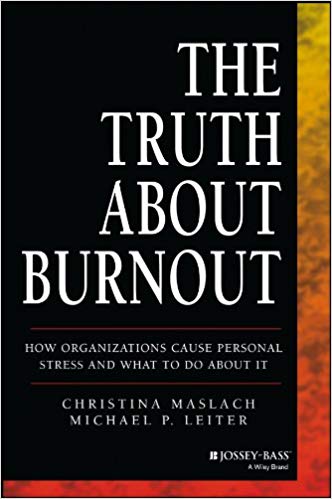Robert Bogue
November 25, 2019
No Comments
It’s easy to get distracted and miss the key point. It’s harder to look through noisy data and imperfect experience to see the hidden signal behind the noise. When you look at stress, it seems like it’s the cause of burnout. It’s an easy target. After all, most people experience stress in conjunction with burnout. However, the question always is which came first – and why should someone focus on one versus the other. Nurse Burnout: Overcoming Stress in Nursing follows a line of thinking that stress is causal to nurse burnout, but we don’t think that’s the case. Let me explain why.
Stress as Friction
It’s important to point out that Nurse Burnout is well researched and pulls in ideas and suggestions from numerous parties. However, many of these parties have failed to understand that stress is fundamentally friction in the system. The problems existed before the stress became apparent, and the stress just mucked up the works enough to cause the whole thing to break down.
Burnout is defined by exhaustion, cynicism, and inefficacy. Stress isn’t the source of these feelings; rather, it’s a coincident outcome. Consider, for a moment, someone who has a strong belief in their ability and a need to make a difference in the world (e.g. a nurse). When they begin to feel as if they’re ineffective, they believe they’re unable to accomplish their expectations, and they develop stress.
Stress, as Why Zebras Don’t Get Ulcers aptly points out, is a payday loan. It’s necessary for short-term threats at times when long term processes wouldn’t get a chance to run if things aren’t successful. However, the cost of focusing all resources on short-term problems – and therefore aborting long-term but important things like digestion and immune system response – is very high. Much like a payday loan, you get what you need in the moment, but the cost is very high.
A stressed person, then, consumes more resources than a non-stressed person would, and the result is less energy (more exhaustion) and greater feelings of inefficacy, further reinforcing stress. This is a classic runaway feedback loop. (See Thinking in Systems for more.)
One could argue that the stress might not come from work and may not be related to their performance of their role. However, once the process kicks off – no matter what the origin – the feedback loop starts to build, much like the feedback that’s sometimes heard from a PA system. Once it starts, the only solution is to turn things off to break the cycle.
Stress is like friction. Instead of getting out 100% of what we put into our efforts, we get a little bit less. The overall drain on our bodies and psyches by maintaining the focus on the short term reduces our overall capacity and makes those feelings of inefficacy worse. Eventually, the forces that conspired to create the first bit of feeling ineffective overtake someone, and they’re stuck, no longer able to put in enough energy to break the inertia.
Causes of Stress
Externally-triggered stress can be just as damaging as internal stress. There are the standard work stressors, as explained in Amy Edmondson’s book, The Fearless Organization, but nursing has its own special drivers for stress as well. The stakes are high – lives literally hang in the balance. The situations are ambiguous – you may believe you know the right answer, but there are always confounding factors.
The healthcare system contributes to the stress as well, between a nursing shortage and the drive for profitability, leading nurses to take on more patients with higher acuity than feels comfortable. A nurse isn’t alone in this situation. Their peers are taking on too much as well. Even physicians are feeling the pressure – and they’re venting some of that pressure onto the nurses.
More challenging for many nurses is the reality that there are times when it’s appropriate to temporarily minimize or ignore their own needs in the care and service of another. The challenge is how long is temporary, and to what degree should self-care needs be minimized. There are no answers to these questions, as nurses who are struggling to find the balance between taking care of the patients and taking care of themselves can attest.
It’s easy to say, “Put your own mask on first before helping others.” At the same time, it’s difficult to know when you’re supposed to do that or finish taking care of the code before taking a trip to the bathroom or getting lunch. These are always difficult choices and ones that nurses face every day.
Fatigue
Everyone gets tired. Everyone feels exhausted at times. The challenge is determining whether that fatigue is the result of a need for a simple break – or something more. If it’s simple fatigue, a vacation, long weekend, or even an evening of peace may relieve the feeling. Even accomplished athletes often need to take a slower pace for a while to regain their strength.
However, fatigue – or exhaustion – as a part of burnout is different. It doesn’t recover with a simple period of rest; it takes something more. It takes believing you can make a difference. Henry Ford said, “Whether you think you can, or you think you can’t – you’re right.” That’s the fundamental truth about how our beliefs limit us. People mostly speak of this in terms of Carol Dweck’s work in Mindset as having a growth mindset rather than a fixed mindset. However, the power goes well beyond that.
Edmund Jacobson first discovered – in the 1930s – that simply visualizing exercises increased muscle strength. Pause and think about that for a moment. It wasn’t the actual effort of lifting heavy things that made a difference, it was merely thinking about lifting heavy things. I’m not suggesting that couch potatoes should be encouraged, I’m saying our beliefs are much more powerful than we’d like to admit. (See The Rise of Superman for more on Jacobson’s work.)
Learned Helplessness and Learned Control
In the late 1960s, Martin Seligman and his colleagues, including Steve Maier, began researching what they ultimately would call “learned helplessness.” It’s the tendency for animals, dogs in their case, to learn that they couldn’t do anything about a situation. Instead of attempting to escape a mild shock, they’d sit down and take it. This continued, even when they were later presented with an opportunity to escape the shocks.
The animals had learned that they couldn’t succeed, so they gave up and stopped trying. Decades later, with the help of new technology, Steve Maier discovered that he and Seligman had it backwards all those years ago. What really happened is the animals learned they had control and used that to mitigate their fear. (See The Hope Circuit for more.)
The implications of this on our ability to recover from burnout – or, more specifically, for us to recharge and overcome our exhaustion – is profound. If we believe that we’re unable to feel refreshed or escape burnout, we won’t. It’s the same kind of wall that Roger Banister crashed through.
Four-Minute Mile
For nearly a decade, runners had been running a mile in just over four minutes. It was believed physically impossible for a man to run a mile within four minutes. He’d die, people believed, as if there were some cosmic relationship between the arbitrary length of a mile and the arbitrary measurement of time in four minutes. However, no one could cross the four-minute mark until 1954, when Roger Bannister did it. His record only lasted for two months. Once the invisible four-minute mile barrier had been breached, others were free to do it as well.
For some, getting past the fatigue is a four-minute mile. It may not be a conscious decision or a choice, but the invisible barrier exists nonetheless. They’re prevented from recovering, because they believe it’s not possible, or at least not possible for them.
Alcoholics Anonymous
There’s a fair amount of controversy about what does and doesn’t work in addiction recovery. Some claim that Alcoholics Anonymous (AA) isn’t effective, though there are no firm statistics, because of the nature of the group’s design. (See How and Why 12-Step Groups Work for more on the basic structure.) What we do know is that AA gives alcoholics hope. They see other people who claim to have been in the same place they’re in – and they’ve recovered and are leading a productive life.
It builds a community of people who are committed to the same thing. (See Start with Why for the power of shared purpose.) The community supports you and therefore helps you not only to know that you can do it but that you don’t have to do it alone. (This also reduces stress.)
Types of Stress
Waddill-Goad refers to Richard Lazarus’ work to describe stress from a positive (eustress), neutral, or negative (distress) perspective. Lazarus’ later work Emotion and Adaptation explains that emotions are a larger category than stress, and stress is primarily a function of the individual’s appraisal of the situation.
Because of the appraisal component, I’d separate stress from motivation. Stressors are motivation. Stress is the result of an appraisal of the stressor (or just the environment) and its impact on our capacity to meet our goals. At the most basic level, our goal is survival, but this is often extended by modern humans to include keeping our homes and therefore being able to pay the mortgage.
Waddill-Goad explains that stressors are evaluated from the perspective of adequate/inadequate resources for our goals of surviving the stressor, the belief in our accuracy of assessing the stressor, and our belief in the controllability of the stressor. Ultimately, these three assessments boil down to whether we’ll be able to compensate or cope with the stressor.
Creating a Supportive Culture
Just like AA can help alcoholics learn that it’s possible to lead productive and happy lives, it’s important that someone be a leader in the organization and create a culture of supportive sharing. There is a great deal of confusion about leadership, as it’s often assumed that management is equivalent to leadership – though Rost takes a whole book in Leadership for the Twenty-First Century to explain why these two are different and what he believes leadership entails. The net effect of which is that leadership can be done from any position.
If you’re willing to be a servant (see Servant Leadership) and focus on the important things (see Heroic Leadership), it’s possible to transform even hostile environments into more caring ones.
Agree to Disagree
There are a few places where there are disagreements that don’t seem to be solved easily by trying to connect missing dots. For instance, this quote: “The opposite of trust is fear.” Having spent a great deal of time researching trust, I can say that trust is not the opposite of fear. (See Trust=>Vulnerability=>Intimacy, Revisited for more.) The opposite of fear is safety – and it’s a perception.
The problem, I believe, is that the mistake was made that trust is the absence of fear. That’s no truer than it is to say that courage is the absence of fear. Courage is moving forward in the presence of fear. (See A Fearless Heart for more about courage) Trust is the decision to believe that someone will behave in the way you expect, knowing there’s a risk that they’ll betray that trust by behaving differently than you’d expect. Trust is a gift that you give the other person in vulnerability, so that you can become more intimate.
In the model of trust to vulnerability, there is safety. You must feel relatively safe to be able to be vulnerable. This is the rub – it’s not that trust is the opposite of fear, it’s the safety that you must feel to trust more and become more vulnerable.
Similarly, there’s the statement, “Respect is a noun, which means it is a thing. It’s a feeling or an emotion. Respect is how a nurse feels about others and how others feel about him or her.” The problem isn’t that respect is a noun. The problem is that respect isn’t a feeling. Respect is a decision. It’s a decision to behave in a way that recognizes the other person’s value, either intrinsically as another member of the human race or because of their unique value to the team or situation. I can respect a person and not feel good about them.
Quality Care
While we care about the mental health of nurses, there’s a secondary concern for the patients in helping nurses overcome burnout. Nurses and physicians who are burned out do not provide as good of care as those who are not burned out. Ultimately, everyone is better when there are better patient outcomes. That’s why there is sometimes confusion when nurses resist what the research says is a best practice.
Nurse reports about the care of a patient during transition used to be done between the two nurses. In most institutions now, it’s being done in the patient room in front of the patient. The research says that this is best for the patient – but, sometimes, it’s still not done. If it’s better for the patients, why would nurses resist?
First, they can’t see that it’s better for the patient in any meaningful way. They may – or may not – believe the research, but it’s not tangible and palpable. Second, if report is done in front of a patient, they may ask questions, thereby slowing down the process. The nurse can only leave when they’ve given report on all of their patients. It’s also embarrassing to have a patient correct the nurse, as may happen when the report is done in front of the patient. While these aren’t substantial, they are pressure that keeps the status quo in some organizations and prevents a transition to doing report – or rounding – with the patient.
Another insidious problem with creating the right culture is that, the more you focus on patient safety, the less likely it is people will want to report a safety issue. It is hard to accept is errors happen. We don’t have to like them (and we shouldn’t). We don’t have to encourage them (and we shouldn’t.) However, because they’re reality, we must accept them. No one wants to admit their errors. (See Mistakes Were Made (But Not By Me) for more.) The one belief that seems to have some ability to help is the understanding that mistakes happen, and it’s what you do about them that really matters.
Mental Models in Nursing
The key difference to managing stress is in the appraisal. If you believe you have the resources – or the support you need – to be successful stressors, will not impact you much. The way you view the stressors can eliminate the potential for them to convert into stress.
Every nurse’s environment is different. It’s true that a nurse isn’t a nurse. Acute care, emergency room, critical care, ambulatory, palliative, oncology, long-term etc., are all different. They require a different mix of skills and perspectives to allow the nurse to survive the environment without burning out. The more that we can learn about the burnout, the more likely we are to eliminate Nurse Burnout.


